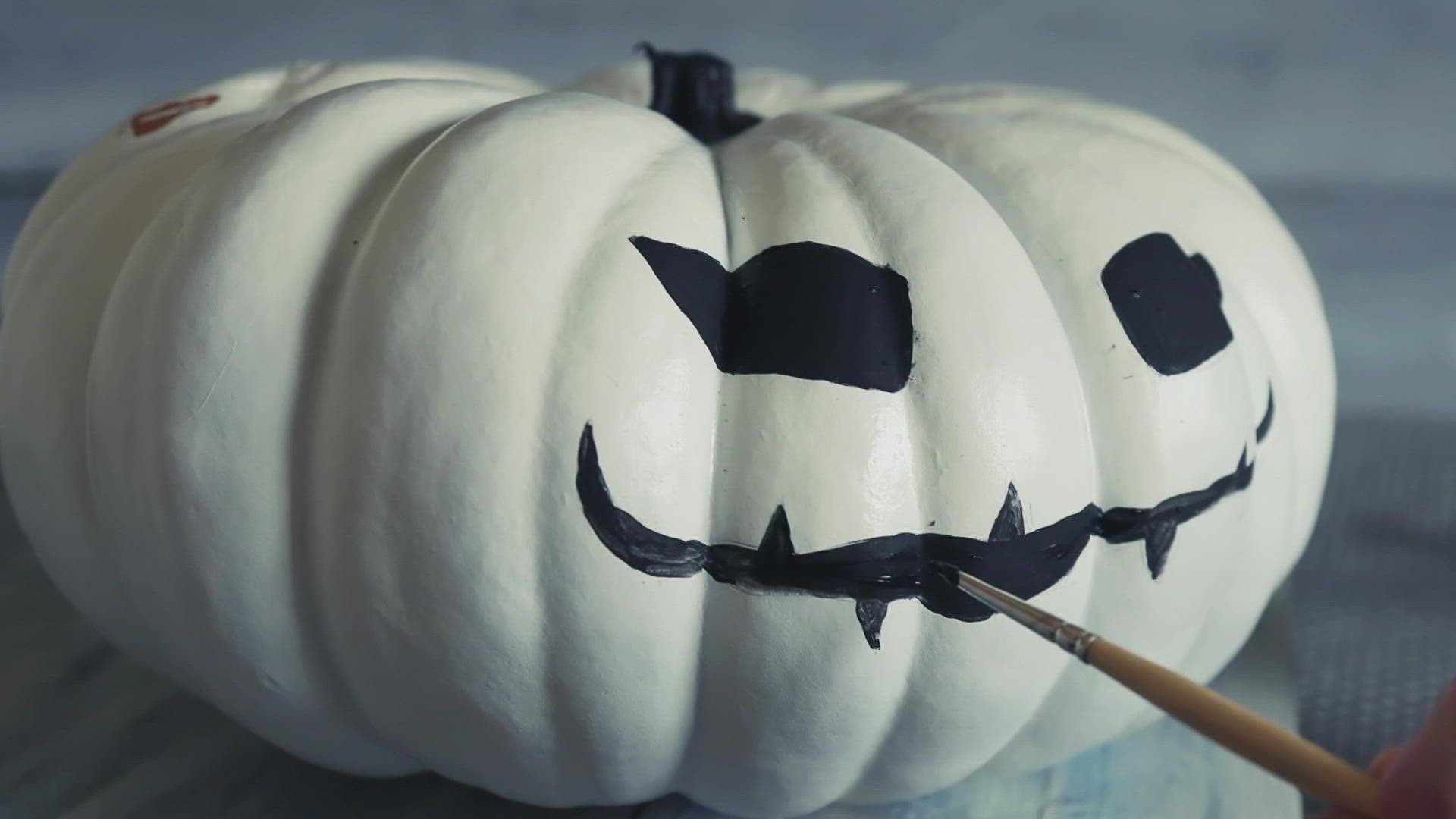SEATTLE — After my daughter carved two jack-o’-lanterns this week, I was curious what we could do to keep them from getting moldy and help preserve them.
So I searched, “how to protect your Jack-o'-lantern from going moldy?"
The top answers I found were to spray it with a mix of water and bleach and to spread petroleum jelly on the exposed parts of the pumpkin. But does that really work?
It turns out yes, it is true, but one option might be better than the other depending on your location.
To verify, we consulted with Dr. Sally Brown, a soil scientist at the University of Washington.
Brown said it’s all about microbes – the tiny organisms that like to eat pumpkins, among other things. It’s hard for microbes to break through the orange skin of a pumpkin. But when a pumpkin is carved, the microbes get easy access to the moist part inside.
Bleach kills the microbes, but there's a catch.
“To stop that pumpkin from getting eaten by the microbes, which is how it turns moldy, you have to do something to make it either inaccessible for the microbes to eat or taste lousy, “ explained Brown.
So, if you want to kill microbes in general, putting bleach on the exposed part of the Jack-o'-lantern will work.”
However, bleach is water-soluble so it won’t stand up to any humidity, which is why pumpkins get moldy so quickly in muggy places like Houston or Miami, or where there's a lot of rain, like in Seattle or Portland. So, you have to repeat the bleaching process daily.
That's why petroleum jelly does the trick. It’s made out of thick hydrocarbons, which Brown explained makes it hard for the microbes to eat.
“It's thick goo that is very difficult [for microbes] to eat, and it will restrict airflow to the exposed parts of the pumpkin,” explained Brown. “So, it makes it very hard for any microbe that's in there already chowing down to continue eating because they like to breathe when they eat, [just like humans]."
Brown added that any type of oil coating – like paint – should theoretically work to prevent molding, but paint, in particular, can make it harder to properly dispose of the pumpkin after Halloween is over, which should be done by composting.
"The same reason that you're asking me how to stop it from molding [is why] it decomposes really quickly,” said Brown. “You can roast it and get the meat of the pumpkin for Thanksgiving, but [otherwise], that [compost] bin is a wonderful way to make sure that the pumpkin goes into making the soils better for next year's pumpkin harvest."
You don't have to put it on the orange shell, but we can verify, yes, using a mix of bleach and water or, better yet, petroleum jelly on the exposed parts will help delay the molding process on your jack-o'-lanterns.
Happy Halloween!

